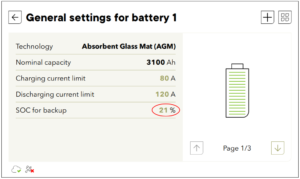
Your car, your backup generator
Thanks to the V2L (Vehicle to Load) functionalities we can use the battery of the EV car as a secondary source of energy, either as backup or additional autonomy. We have tested this functionality at our factory in Sion with a Nissan Leaf and Hyundai Ioniq5.
As the automotive industry continues to evolve, the need for smarter and more efficient vehicles has become more important than ever. One of the latest innovations in this space is ability to use your electric vehicle as a power source for your home or the grid.
The Vehicle to Home/Building (V2H or V2B) functionality allows you to use your electric vehicle as a backup power source for your home either to increase your autonomy and autarky rate or in the event of a power outage. The Vehicle to Grid (V2G) functionality consists of your electric vehicle to supply power back to the grid when it’s not in use. This helps to balance the grid and increase the overall efficiency of the power system. While these interesting functionalities are still under development and require regulation to be in place, there is an interesting functionality as the starting point for these applications, the Vehicle to Loads (V2L).
V2L technology enables vehicles to function as mobile power stations, providing electricity to power external devices and equipment. This functionality has a wide range of potential applications, from powering tools and appliances on a worksite to providing emergency power during a blackout. To enable this functionality, vehicles must be equipped with the necessary hardware and software. This includes specialized charging outlets and control systems that allow the vehicle to regulate the flow of electricity to external devices. While V2L functionality is still in its early stages, it has the potential to revolutionize the way we think about vehicle design and use. As technology continues to evolve, we can expect to see more and more vehicles offering this innovative functionality.
On the other hand, our next3 smart inverter charger is the energy hub of a system centralizing the energy flows from solar, AC sources and loads and the battery. The next3 is able to manage the supply of energy from an external AC source, from any of the AC ports (AC source, AC loads, AC flex), when it is accordingly configured. In order to keep up to date and take the maximum out of our next3 smart energy solution, we have tested the V2L functionality available in two different cars: Nissan Leaf and Hyundai Ioniq5. And we have used the V2L function to supply additional AC power to our next3.
Nissan Leaf test, July 2022
The first test was back in July 2022 with the Nissan Leaf and a swiss partner specialist in bidirectional charge and discharge, Evtec.

We used the Setec Power 3kW V2H charger for Nissan Leaf, which uses the CHAdeMO standard to convert the DC high-voltage electricity from the EV battery into AC electricity, enabling the EV battery to power your home. Perfect for those of you who have frequent power outages or travel in an electric vehicle. The SETEC Power Vehicle to Home (V2H) 3kVA Charger continuously checks the battery level of your electric vehicle. It automatically stops when 30% of the battery is left, avoiding embarrassing situations where your electric car runs out of power.
The test block diagram was the following:
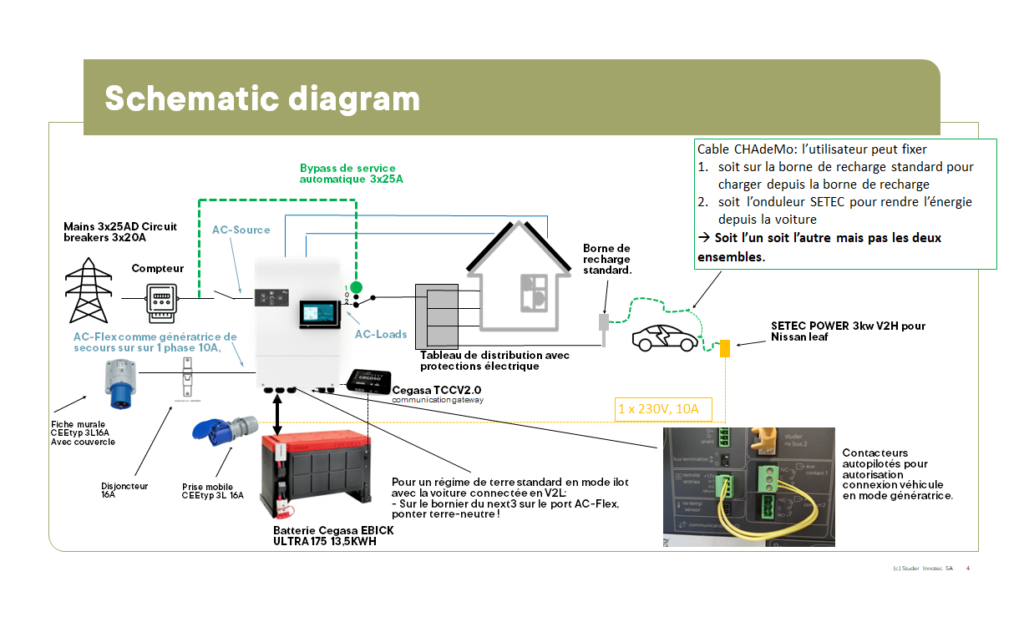
Hyundai Ioniq5 test, August 2023
With the collaboration of the Hyundai car dealer in Sion (Garage du Stade Blanc SA), we tested the V2L function of the Hyundai Ioniq5 and our next3 on the 30.08.23.

From the documentation of the vehicle:
Simply plug in your laptop or e-bike to charge them, just like you would at home. The innovative Vehicle to Load (V2L) technology of IONIQ 5 allows you to get the most out of sustainable electric mobility. A 230 V on-board electrical outlet is located in the rear seat, allowing you to freely use or recharge all your electrical devices – on the move or when stationary. And if you’re at the beach or camping, you can charge your electric scooters or run your camping gear using an adapter that plugs into the outdoor two-way charging outlet. The exterior socket provides 3.6 kW of power, even when the vehicle is off. The high voltage battery is protected in all circumstances, and you choose the minimum autonomy to maintain between 20 and 80%.
| Next3 AC flex | Connections |
| L1 | Hyundai V2L phase |
| L2 | Not connected |
| L3 | Not connected |
| N | Hyundai V2L neutral + Hyundai V2L earth |
| Earth | Hyundai V2L neutral + Hyundai V2L earth |
When the power supplied by the V2L exceeds 3.6kW, the V2L stops and no longer supplies voltage. The next3 then switches to offgrid operation and then connects to the AC source if the network is present. The V2L had to be manually restarted by handling the car.
With the right configuration and wiring, the use of the V2L function of the electric vehicle with the next3 system works perfectly and the energy management with SOC levels is tailored to the customer’s needs.
Example of configuration
| SOC | Comportement | |
| AUX1 deact. | 55 | Priority grid connection |
| AUX1 activ. | 50 | SOC remains between 50 and 55 if consumption is < 3.5kW (P V2L) |
| SOC for Backup | 21 | Priority V2L connection |
| AUX2 activ. | 20 | SOC remains between 15 and 20 if consumption is > 3.5kW (P V2L) |
| AUX2 deact. | 15 | Priority grid connection |
Wiring of the remote input and auxiliary contacts
Connection to the genset (V2L) is allowed when command entry 1 is active.
The auxiliary contacts and remote entry must be wired in the following manner to achieve an AND logic function:
- remote entries +12V aux contacts 1 C
- aux contact 1 NO aux contact 2 C
- aux contact 2 NO remote entries IN1
Configuration Wizard
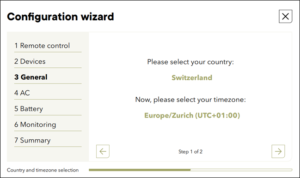
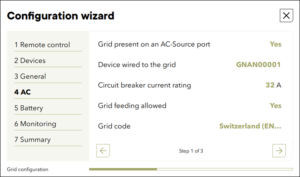


Genset settings
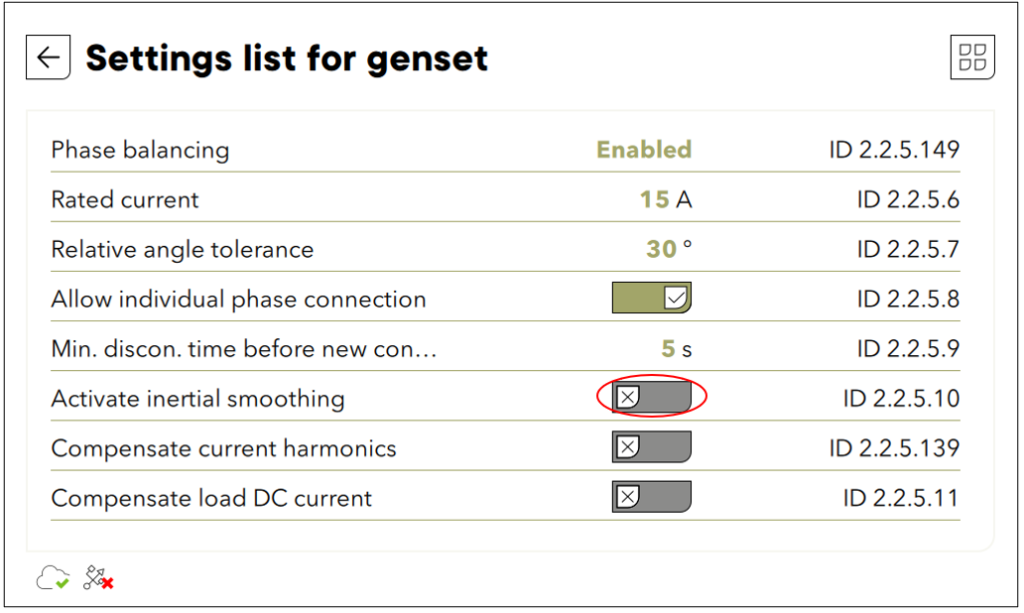
Inertial smoothing is irrelevant here and could be unstable with some types of V2L. That’s why you need to turn it off.
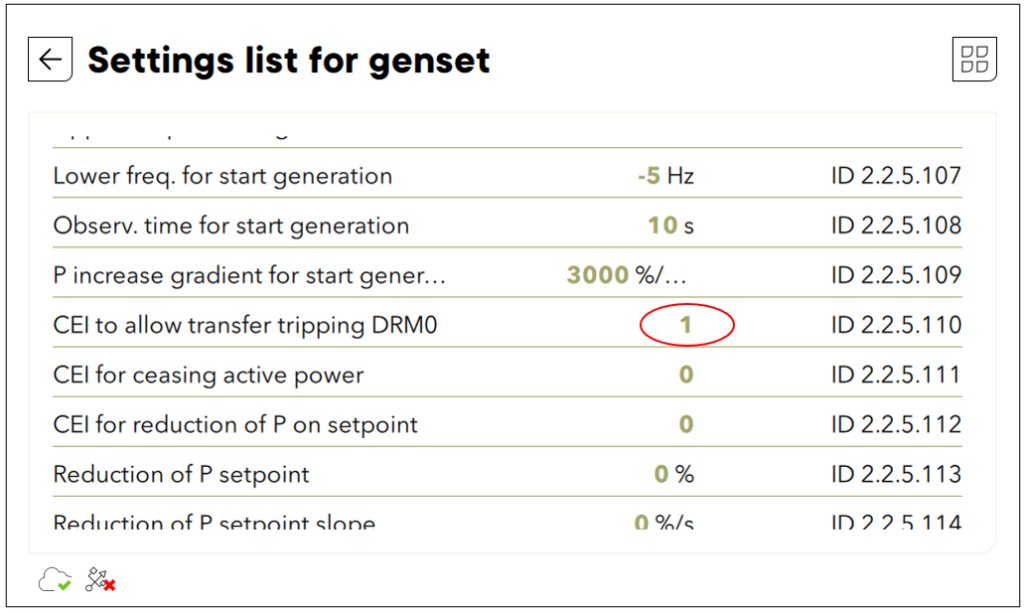
Installation settings
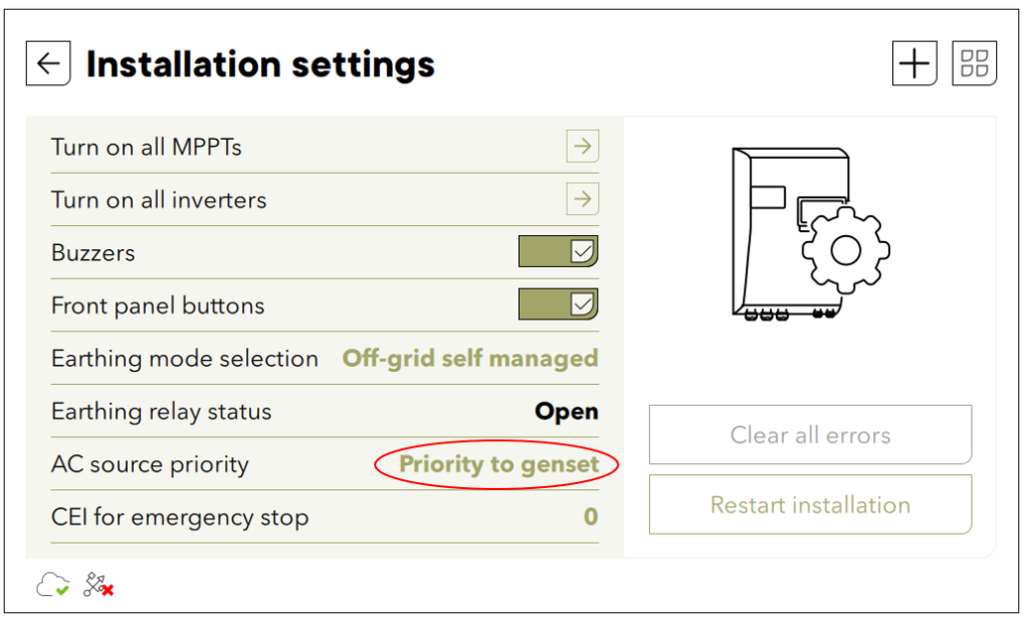
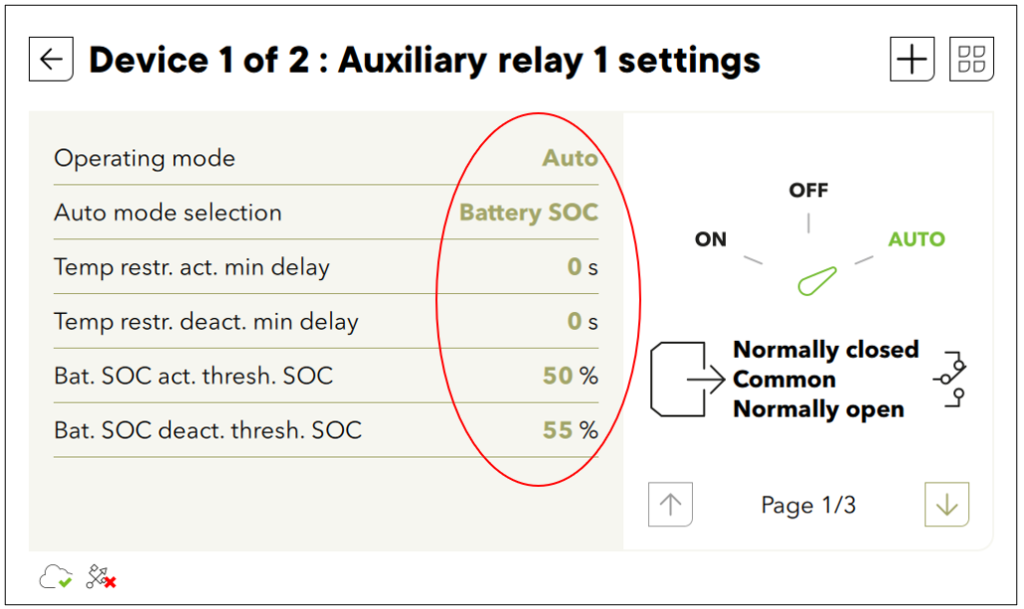
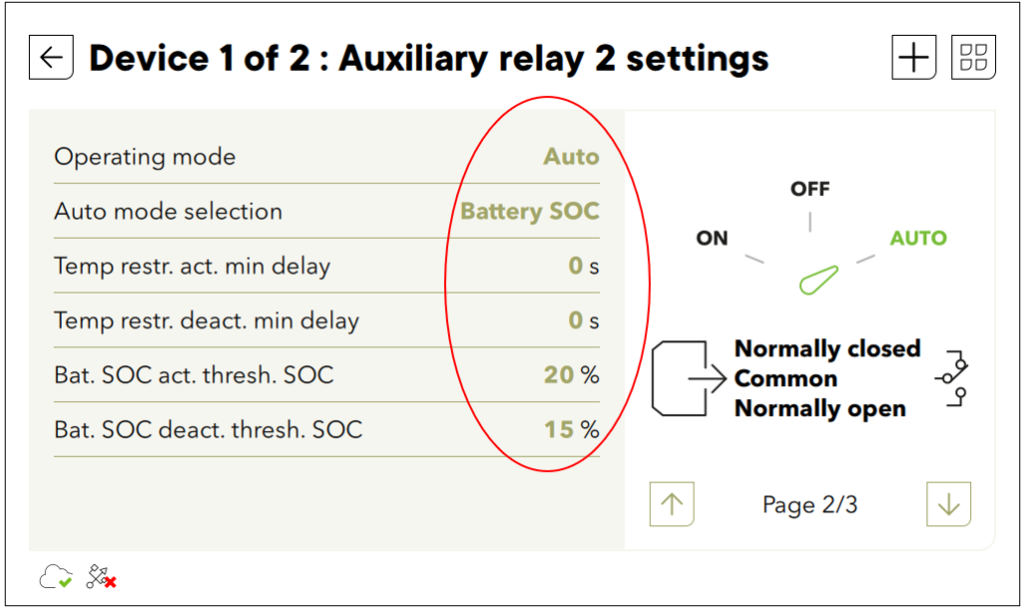

Battery settings
